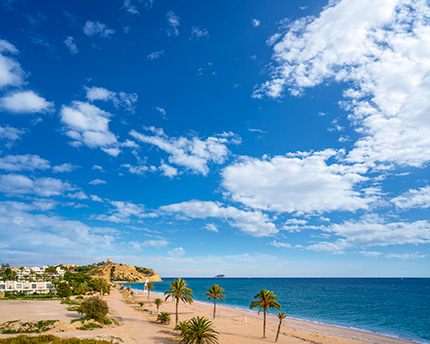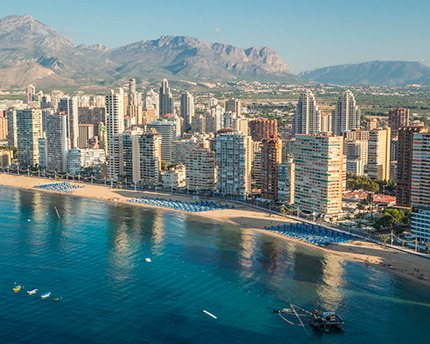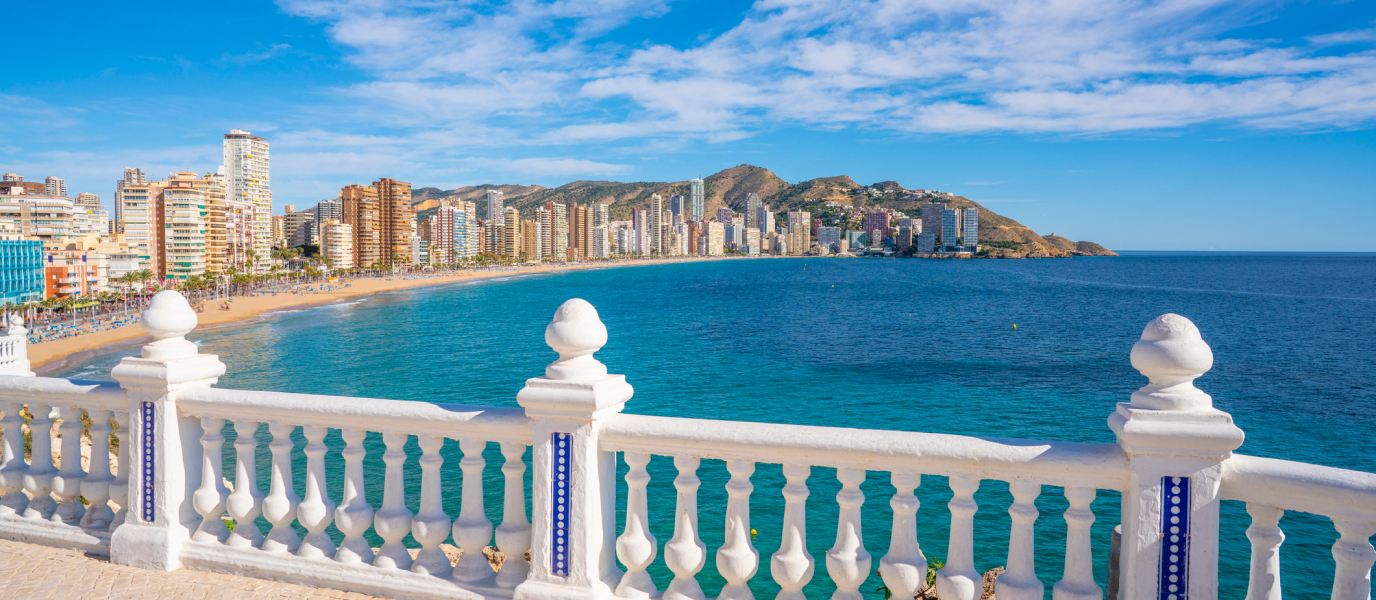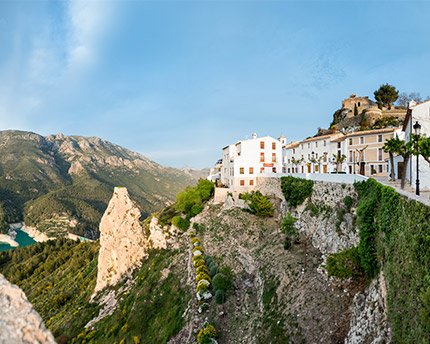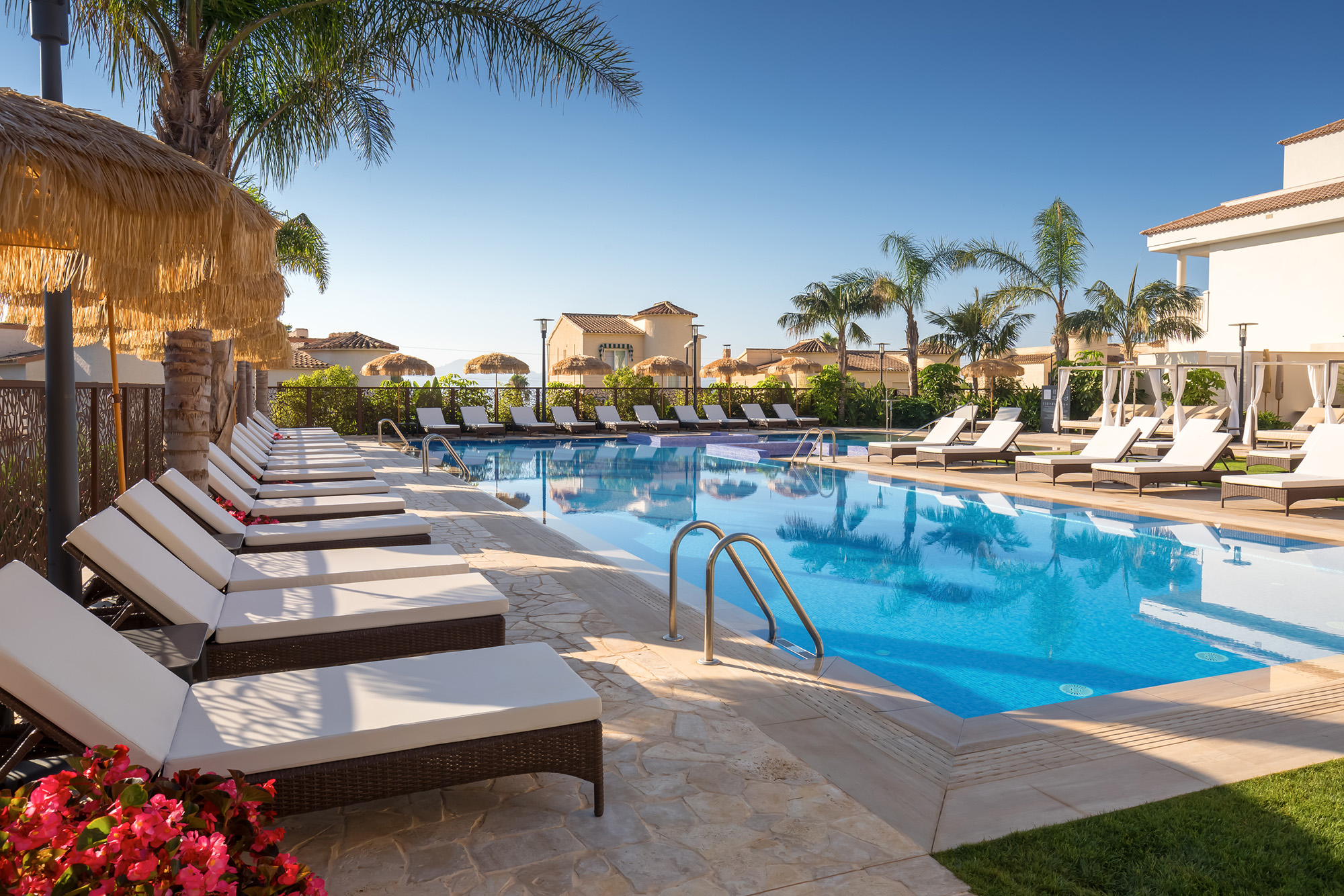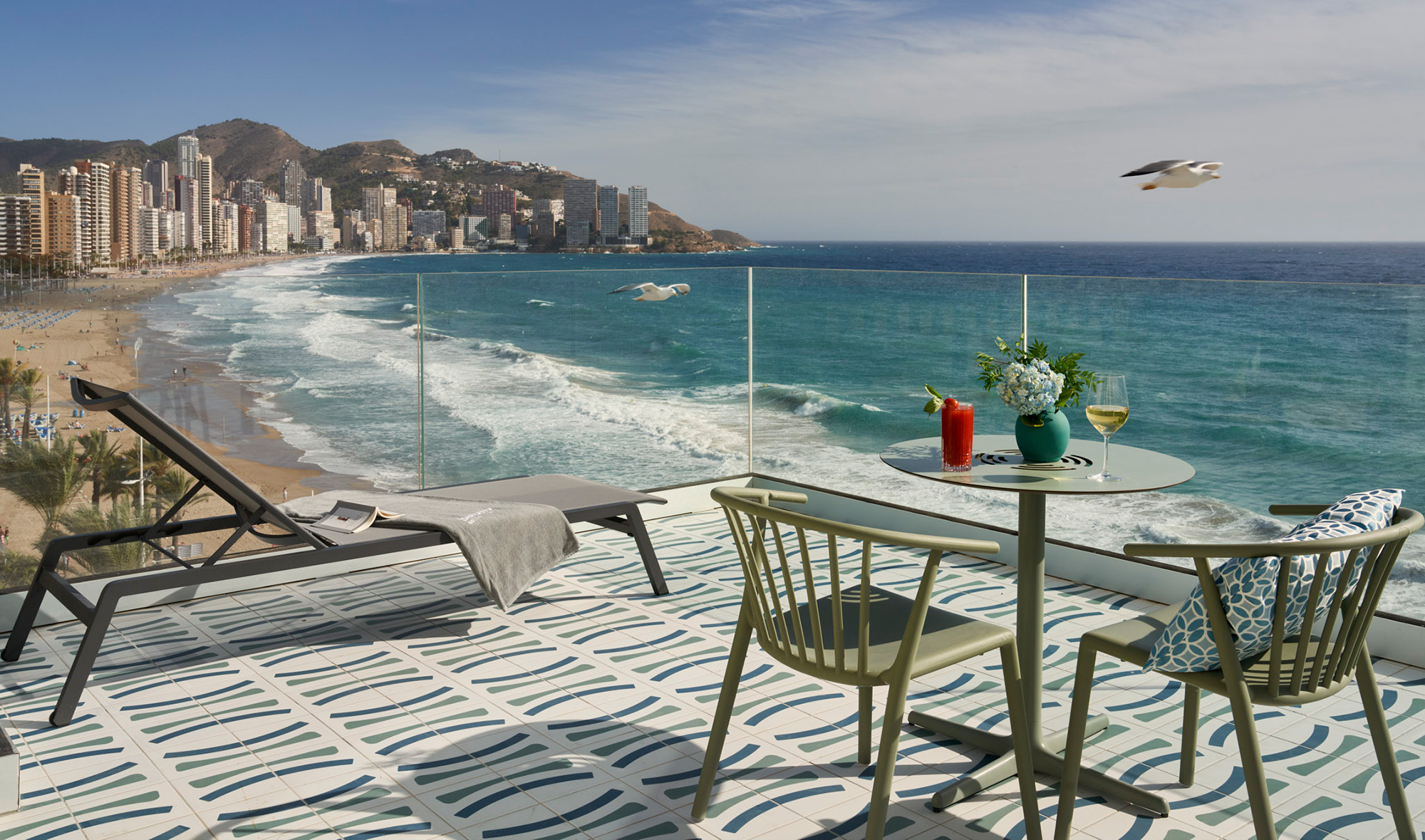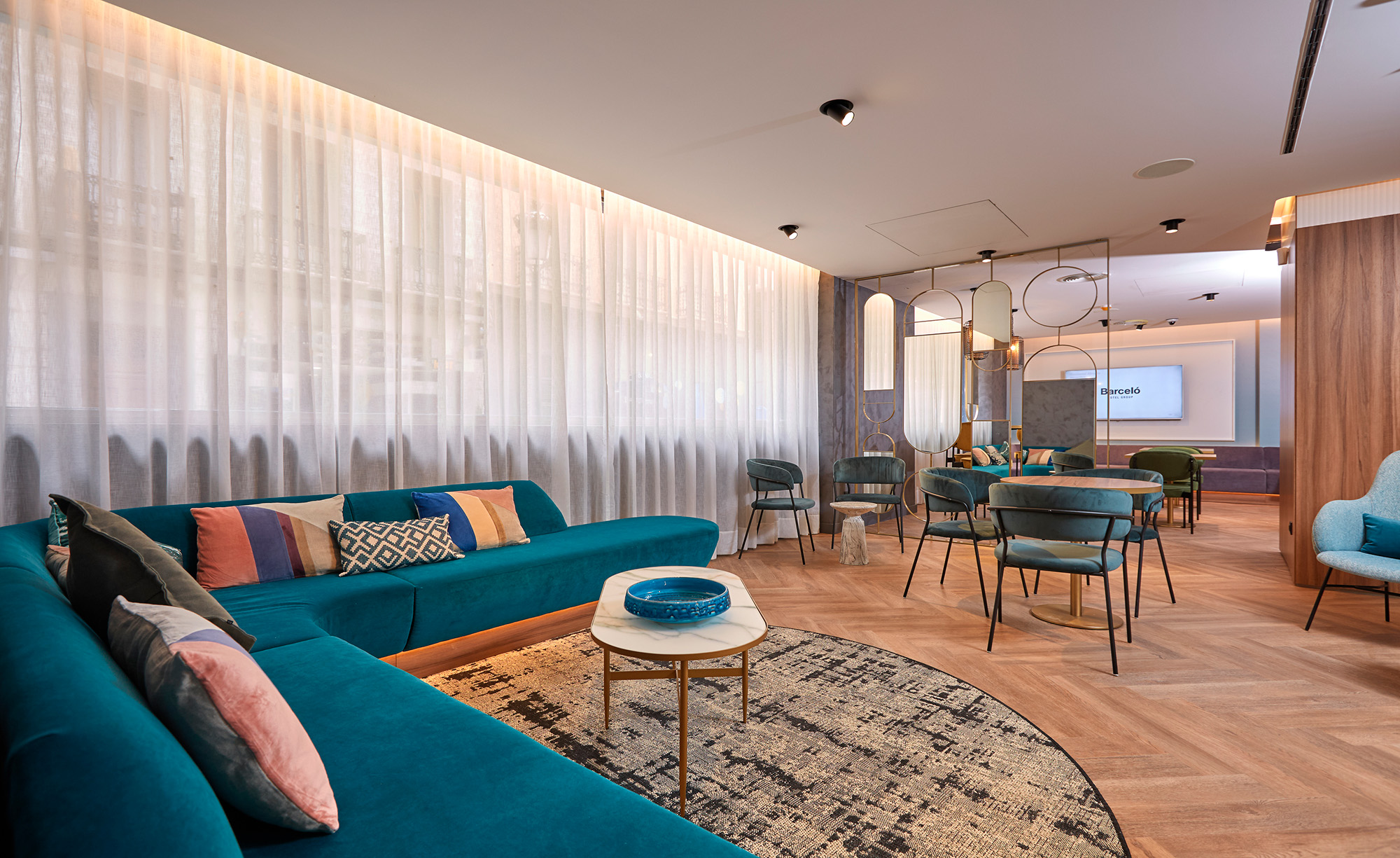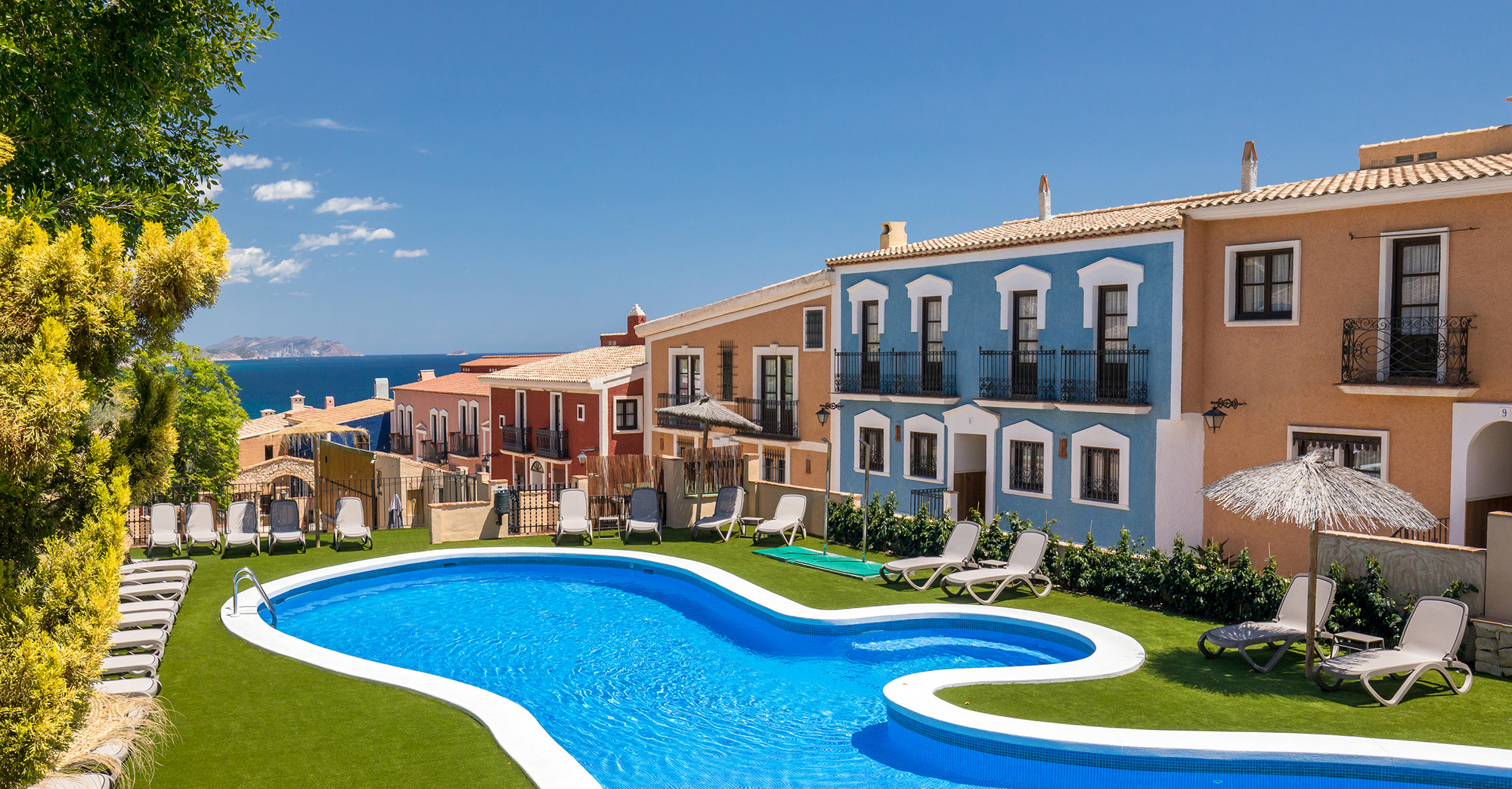Just 32 kilometres north of Alicante, in the Marina Baixa region, is Villajoyosa (La Vila Joiosa, in Valencian). With 34,000 inhabitants, the municipality has become a tourist attraction thanks to its great location and magnificent beaches. In fact, its population grows considerably during the summer period. Even so, La Vila, as it is affectionately known by its residents, has not lost one ounce of its traditional identity and has managed to protect its marine and artisan roots.
Both its picturesque streets and its port’s traffic prove it to be a town that is proud of its fishing tradition. In addition, the presence of some of the main chocolate brands in Spain underlines the unconditional love of this “sweet” town for its craft, in this case in terms of gastronomy.
But La Vila is so much more. Let’s take a walk through its streets, beaches, museums and unique places, highlighting everything there is to see in Villajoyosa.
What to see in Villajoyosa: visit its old centre
Although it is believed that its origins date back to the Greek colonies on the Spanish Mediterranean coast, having been coveted by Aragonese and Arabs in the Middle Ages gave it a very defensive nature. This can be seen in the sections of wall that can still be found in the town. The old centre of Villajoyosa, which has been declared an Asset of Cultural Interest, can be reached from the Plaza de la Generalitat along the Carrer Major.
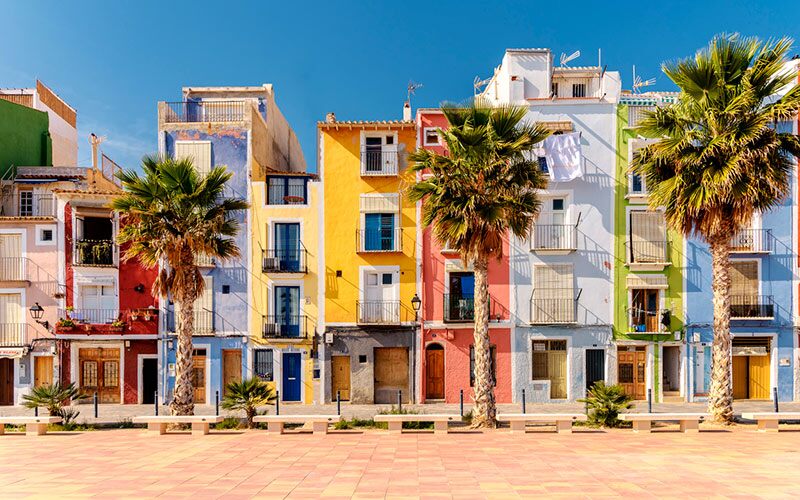
Western and Levantine Walls
These are the two medieval defensive sections that have survived. The western wall is surrounded by unique multicoloured façades overlooking the rambla of the Amadorio river. From its bridge there is an impressive panoramic view of this wall with many colourful hanging houses nearby.
The Levantine wall, topped by an imposing tower, runs parallel to calle Costera de la Mar, the slope that once connected the city with the Central beach.
Gothic church-fortress of Nuestra Señora de la Asunción
Once inside the old town you’ll see that it is formed by narrow and twisted streets in which the multicoloured façades follow one another. Finding the temple of Nuestra Señora de la Asunción is easy, as its imposing walls rise above the rooftops. It is an authentic church-fortress in which its apse forms part of the city wall. Its sober Gothic style, with hardly any openings for light, contrasts with an adjoining chapel dedicated to Saint Marta, patron saint of Villajoyosa, with lavish decoration and a colourful dome of blue-glazed tiles.
Arsenal District
Calle Costera de la Mar leads us directly to the Arsenal district. It is an area that has retained its marine aroma completely. What stands out most in this place are its façades painted with vibrant colours (yellows, reds, indigo blues…) that look towards the Mediterranean.
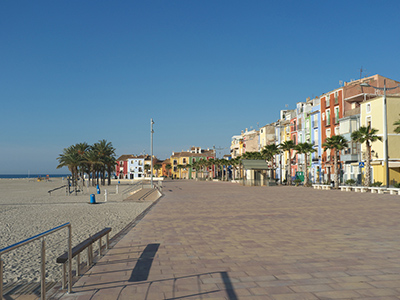
In fact, it is very likely that the tradition of painting the façades in different colours in the old town was established in this neighbourhood. It is believed that the fishermen’s families decorated their houses like this so that the fishermen could easily locate them from the sea and communicate with their loved ones through gestures.
Be that as it may, the Arsenal district is now the meeting point for fishermen, shopkeepers, tourists and hotel and catering professionals. Terraces have not stopped springing up in this place, and it is the starting point of a lovely promenade that reaches the port and its breakwater.
Chocolate Museums in Villajoyosa
Villajoyosa’s chocolate making tradition dates back to the 17th century, when the town became one of the main ports where cocoa from Venezuela and Ecuador was unloaded and distributed in Europe. The chocolate industry as such dates back to the beginning of the 19th century, when an Italian merchant brought the first cocoa stone grinder.
Villajoyosa has three major landmarks related to the history of cocoa: the Valor Chocolate Museum (Avenida Pianista Gonzalo Soriano, 13), and the chocolate factories Clavileño (Carrer Colón, 187) and Chocolates Pérez (Avenida de Finestrat, 789). At all these places of interest, entrance is free and a you can taste the products at the end of the visit.
Vilamuseu and La Barberá dels Aragonés House Museum
One of the latest cultural additions to the town is Vilamuseu, which is the Municipal Museum of Villajoyosa, formerly known as the Municipal Museum of Archaeology and Ethnography. Located at calle Colon, 57, this modern space is home to a large collection of Phoenician jewellery, Roman inscriptions and ancient Egyptian, Greek and Iberian artefacts. Vilamuseu is also the heart of the city’s network of museums, as well as a centre of interpretation and guided or archaeological tours. It is open from Tuesday to Sunday.
Vilamuseu also manages the Casa Museo La Barberá dels Aragonés (calle Huit de Maig, no number), an old 17th century country house that was converted into a Romanesque palace in the 19th century. There you can see how people lived 200 years ago, as it houses an interesting collection of furniture, furnishings, clothing and ceramics of the time.
Port of Villajoyosa
One stop not to be missed on a visit to Villajoyosa is its port, which has retained much of its traditional charm. You can still see how boats are built or fishing nets are repaired. It is also worth witnessing the arrival in the afternoon of the fishing boats that go out every day to fish, and especially the departure of the boats that go out to sea, around 11 pm on Sundays, and which will be out until Friday.
For those who want to taste the goods first-hand, the restaurants around the port offer freshly bought fish at the auction that takes place at the port’s fish market.
Iberian and Roman Sanctuary of La Malladeta
To reach this sanctuary in the south of Villajoyosa you must follow the path to Paraíso beach. It is believed to have been built in fourth century B.C. in honour of the mother goddess Tanit of Carthage and which was renovated around 100 B.C. as a Roman sanctuary; although the place was abandoned in the time of the Empire, around 80 A.D. The cult probably moved to the forum temple of the city of Villajoyosa, declared a “municipium” by the Emperor Vespasian at that time.
In the area you can also find the remains of Villa Giacomina, a curious little palace from the beginning of the 20th century, inspired by the Arabs and built by Alfonso Esquerdo, a Mason doctor who was the nephew of the politician and psychiatrist José María Esquerdo, and a close friend of the writer Blasco Ibáñez.
Sant Josep Tower
Other outstanding architectural elements in the vicinity of Villajoyosa are undoubtedly its towers. The most important is the tower of Sant Josep, located near the playa de Torres, on the eastern edge of the municipality. More than a tower, it’s a mausoleum. In fact, this unique structure was built in the second century A.D. and is considered the largest burial monument preserved from the Roman period in the Peninsula.
Aguiló Tower
Another of the most outstanding watchtowers in the area is Aguiló Tower. It is located on the edge of the municipality of Villajoyosa, on the cliff near the urbanisations of Cales and Atalayes, very close to the municipal area of Benidorm.
It is a very peculiar watchtower, as it has quadrangular flooring. It was built by Philip II in the 16th century to defend the coast from dangerous Turkish raids and Berber piracy. From the tower there are incredible views of all of Benidorm.
Beaches of Villajoyosa
In the 12 kilometres of Villajoyosa coast there are five beaches that hold a blue flag, a hallmark that guarantees its excellent condition and all types of services. Let’s run through a brief tour of the beaches that we can find on the coast of La Vila.
On the eastern edge of the municipality, at the foot of the Aguiló tower, you can find the Racó del Conill. It is a beautiful cove, somewhat hidden, that has become a star attraction for those who practise nudism. And virtually next to the municipality is playa de Torres, the sandy area where the old Roman city was located the main feature of which is the already mentioned Sant Josep tower. Right at the mouth of the Torres River there is a beach bar.
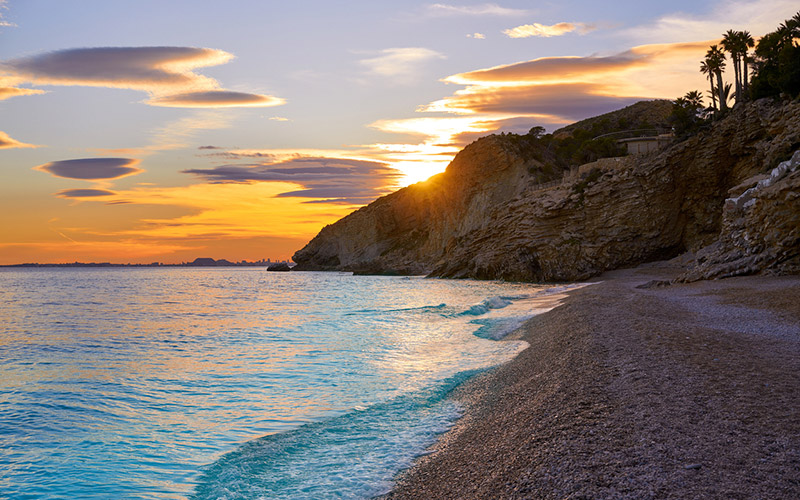
The beaches of Tio Roig and Los Estudiantes are the sandy areas that follow before reaching the first blue flag beach: Varadero. Once past the port, the main sandy areas of the municipality follow: the enormous la Vila beach, also known as Centro, and Paradís beach. Both coasts have about 2.5 kilometres of sand in total and have a blue flag.
A little further to the west there are slightly more secluded beaches, as the urban centres are gradually disappearing, but equally magnificent are the beaches of Bol Nou and La Caleta, both of which have a blue flag. Among them is the small sandy area of L’Esparrelló, with a nudist zone. Villajoyosa’s beach offering ends with the Xarco cove, which has a dog beach section.
What to see near Villajoyosa
In addition to its proximity to a first class international tourist hub such as Benidorm, from Villajoyosa you can take interesting trips to nearby picturesque towns. Especially beautiful are the villages that are found on a lovely route to Alcoy/Alcoi through Sierra Aitana, such as Orcheta, Sella or Relleu.
























































